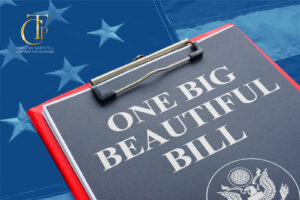The IRS has put conservation easements on its annual “Dirty Dozen” list which, says the IRS, “represents the worst of the worst tax scams.” The DOJ has also declared war on the misuse of conservation easements and is investigating some investors. How did a seemingly benign charitable tax deduction go so wrong?
A Bit of Background
A conservation easement restricts certain types of activities such as construction on land in order to protect the environment and preserve the land’s resources in perpetuity. The purpose of a conservation easement could be to protect wildlife, plants, fish, waterways, historical sites or just green space. Conservation easements remain in place even if the property is sold. The owner may still continue to use the land for activities not barred by the easement. They could, for example, farm it or graze horses. Conservation easements are not cookie-cutter. They take into consideration what the land is being protected against and also how the owner is currently using the land.
To set up a conservation easement, the owner enters into an agreement with an environmental organization or public agency, the donee. Donees may not be just anyone, but most U.S. government agencies, public charities and not-for-profit land trusts qualify. The donee then has the right to enforce the easement.
Conservation Easements Are Eligible for Charitable Tax Deductions
Along with philanthropic intent, people may set up conservation easements in order to get a charitable tax deduction. In most cases, you cannot claim a charitable tax deduction on property if you still own property you donated. A conservation easement is different. The owner may claim contribution deductions for the fair market value of conservation easements they donate even though they still own and use the land.
The tax deduction is not for the total value of the land, but for the value of the use you gave up. So, you have the land appraised for the value it would have if the land were developed, perhaps the site of a residential housing development or office park. Then you get another appraisal for the land with the conservation easement which would bar development. The difference is the value of the charitable contribution.
Under Internal Revenue Code Section 170(h)(1), a qualified conservation contribution is
“a contribution
(A) of a qualified real property interest
(B) to a qualified organization
(C) exclusively for conservation purposes.”
There are more benefits. The limitation on a charitable deduction for a conservation easement is usually 50% of adjusted gross income for individual taxpayers. In certain cases, the limit is even higher than 50%. Compare that to the limitation on deductions for contributions of capital assets, which is only 30% of AGI.
Another plus is that for any charitable contribution that is above the limitation, the taxpayer can carry it over for 15 years. Most charitable contributions are limited to a five-year carry-over.
So, What’s the Problem?
On their face, conservation easements sound beneficial to all those who respect the environment. They can be another arrow in the quiver of environmentalists who want to resist the trend to “pave paradise to put up a parking lot.” (Our apologies to Joni Mitchell) Owners of green spaces are given charitable tax deductions to encourage them to preserve part of the natural world, which results in a benefit to the community. In theory.
But people often take well-intended regulations and twist them to purposes never imagined in the original design. Let’s look at how conservation easements can be used to cheat on taxes.
Fraudulent Appraisals
Many people take conservation easement charitable deductions in excess of the amount they invested in their interest in the land. Given the limitation on deductions (discussed above), how could this happen? It’s often the result of a fraudulent appraisal.
- For example, you might buy some grassland at $2 million, and put a conservation easement on it that restricts its use to grazing livestock. There can be no development or construction outside of maybe a barn for the animals.
- The appraiser then values the land at $20 million, on the basis of its worth if you developed commercial buildings on the property, even if that may not ever be a likely outcome.
- Voila! A $20 million charitable tax deduction, $18 million over what you actually paid.
Syndication
When you are talking about this kind of a pay-off in real estate, syndication cannot be far behind. Increasingly, instead of benevolent landowners granting conservation easements in order to preserve the land, promoters are syndicating conservation easement purchases for investors, who then get charitable contribution deductions that far surpass the amounts they invested. The only intent of the investors is to get big tax deductions that exceed their investment.
In a July 13, 2017 letter from IRS commissioner John Koskinen to Senator Ron Wyden, he says, “The average contribution deduction from this preliminary analysis was 9 times the amount of the investment in the transaction…” On top of that, the promoter, of course, takes a healthy fee for putting the deal together.
The IRS made it clear in Notice 2017-10 that syndication deals where investors take charitable tax deductions that far exceed their investment are committing tax evasion. The IRS refers to these types of transactions as “Listed Transactions.” The notice applies where promotional materials indicate the investor would be entitled to a charitable deduction over 2 ½ times the money they invest. For the investor, investing in a shady syndicated conservation easement scheme could result in an audit where they end up paying the proper taxes plus a stiff penalty, or it could even result in jail time for tax evasion in the most egregious cases. Those who enter into these kinds of transactions must disclose them to the IRS.
The DOJ is also taking an increasingly dim view of the abuse of conservation easements. In December, the DOJ, sought an order stopping EcoVest Capital Inc (which has syndicated many conservation easements) and others from selling “abusive conservations easement syndications tax schemes”.
Should Your Clients Avoid All Conservation Easements?
Certainly, your clients should be very careful about entering into conservation easements. Syndicated conservation easements are extremely suspect, and the IRS is looking closely at them.
However, if your client owns some land they would genuinely like to preserve, they are not a target of the IRS. Notice 2017-10 is not aimed at taxpayers who want to put a conservation easement on property they already own. Neither does it apply to a pass-through entity such as an LLC where there has been no promotion to investors to get a huge tax deduction from their investment in the conservation easement.
For more in-depth training , apply to become a Certified Tax Planner today!





